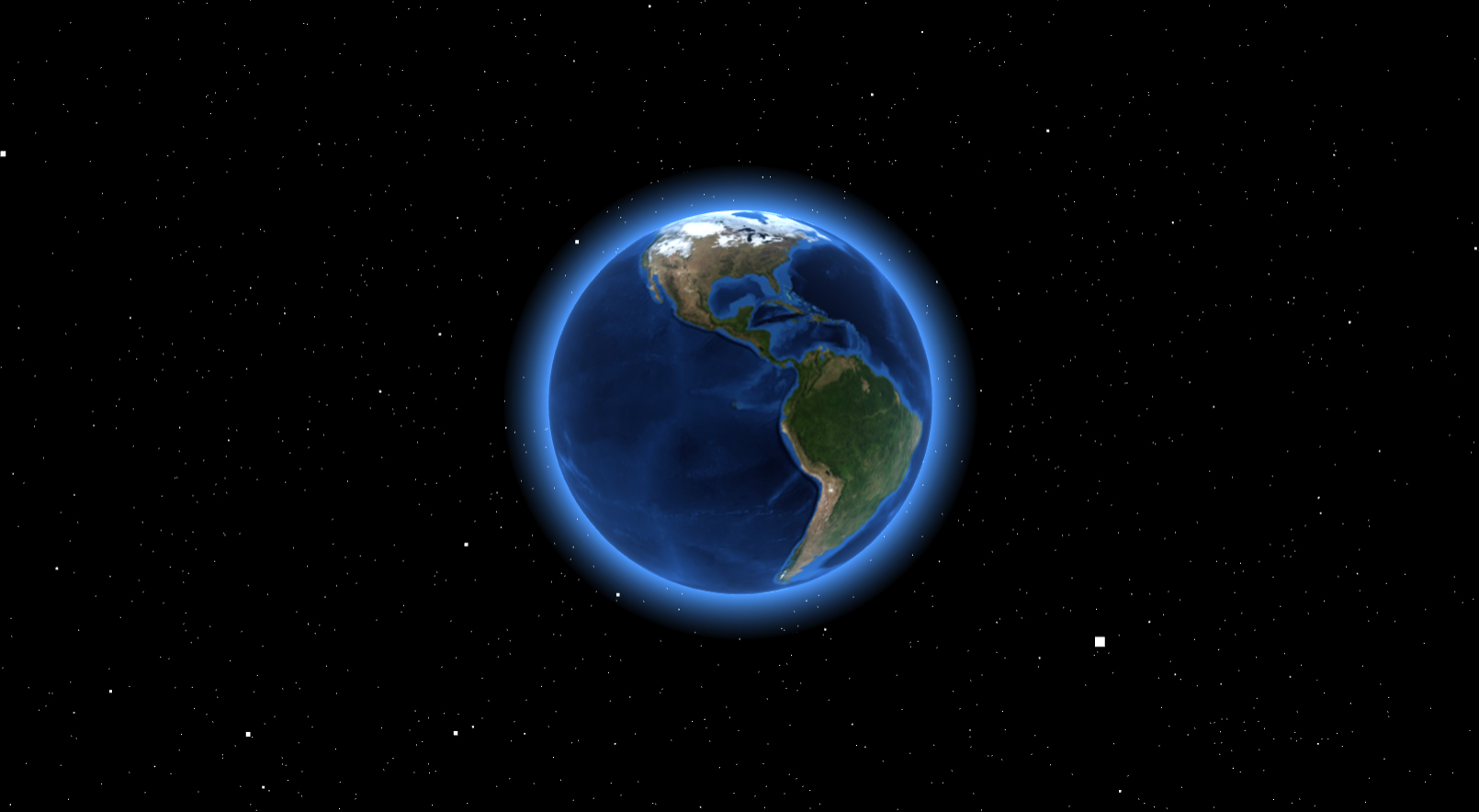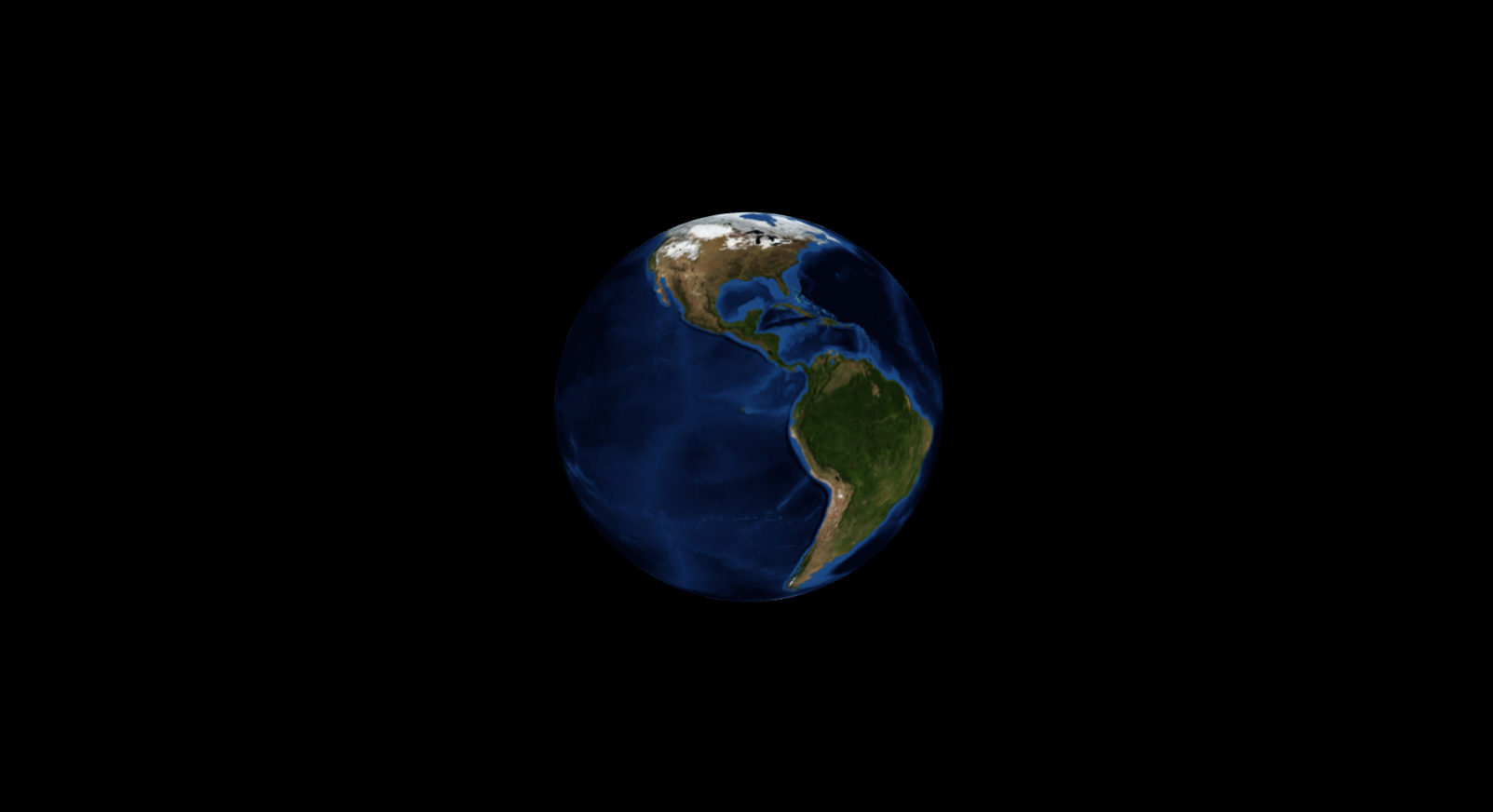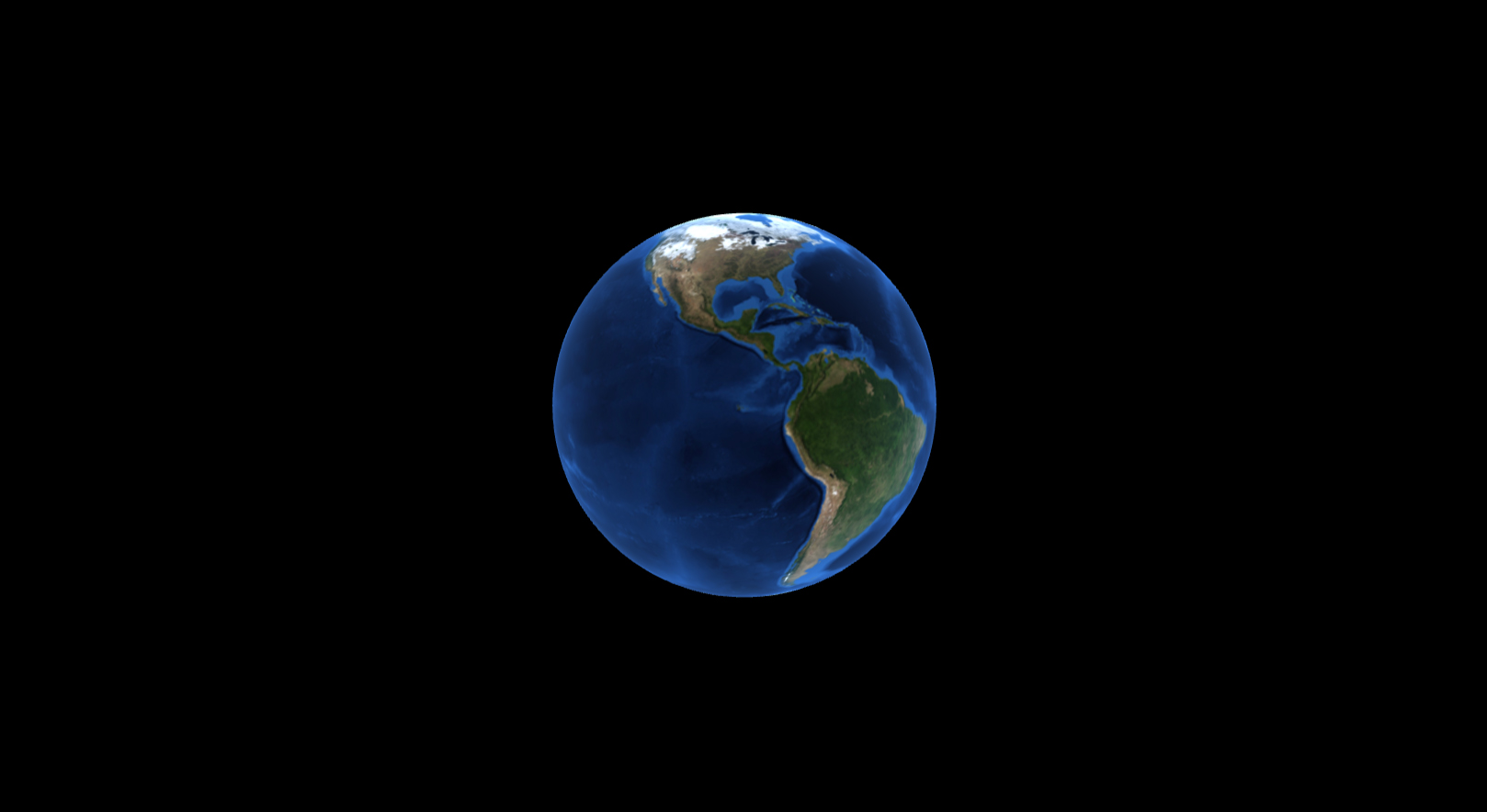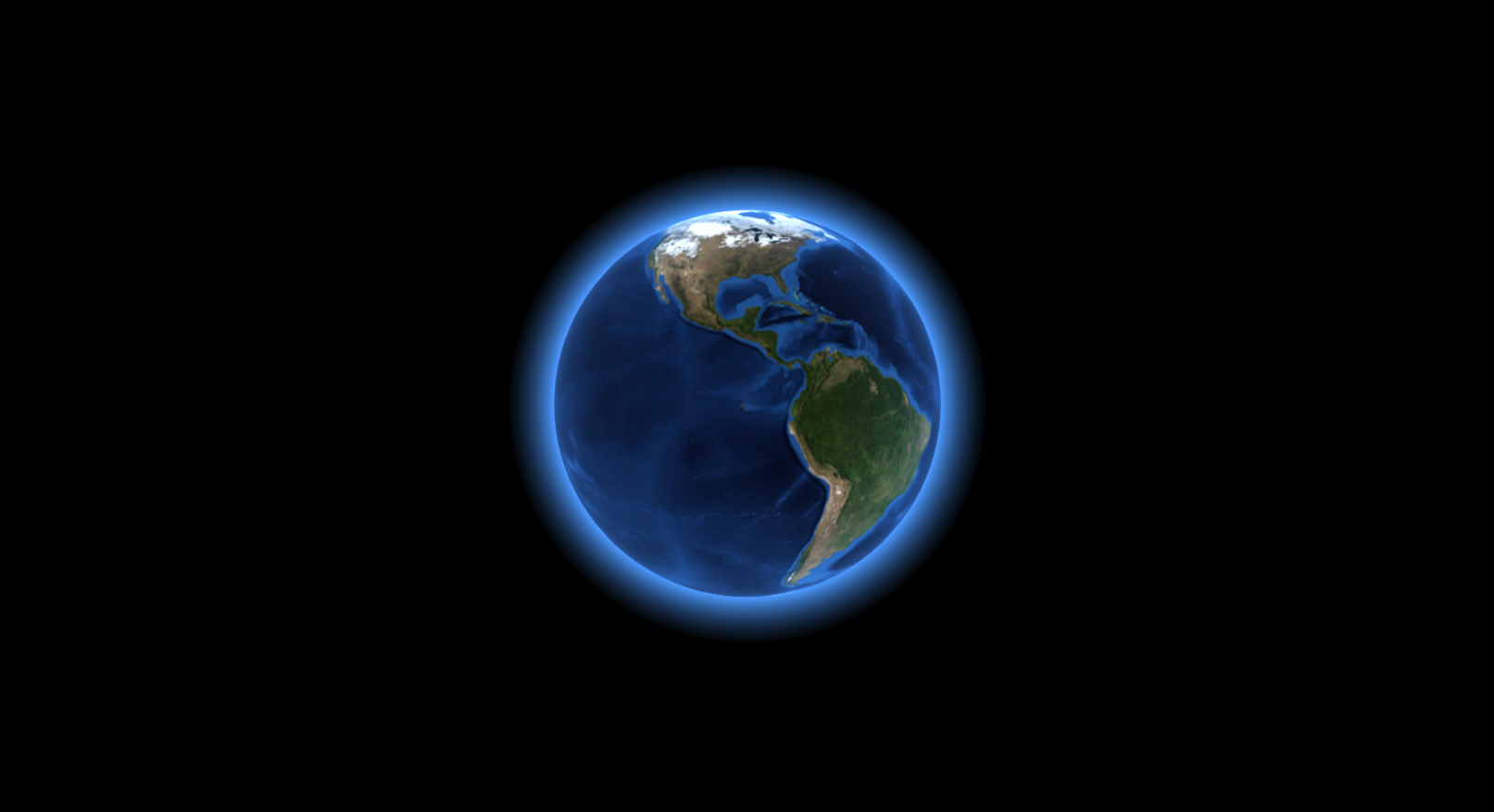원하는 결과는 다음과 같습니다.

장면에 추가된 모델은 3개입니다. 지구 본체, 지구 주변의 푸른 빛(Blooming Light), 지구 주위의 하얀 작은 무수한 별들.
먼저 지구 본체에 대한 코드입니다.
const sphere = new THREE.Mesh(
new THREE.SphereGeometry(5, 50, 50),
new THREE.ShaderMaterial({
uniforms: {
globeTexture: {
value: new THREE.TextureLoader().load("data/earth.jpg")
}
},
vertexShader: `
varying vec2 vertexUV;
varying vec3 vertexNormal;
void main() {
vertexUV = uv;
vertexNormal = normalize(normalMatrix * normal);
gl_Position = projectionMatrix * modelViewMatrix * vec4(position, 1.0);
}
`,
fragmentShader: `
uniform sampler2D globeTexture;
varying vec2 vertexUV;
void main() {
vec4 color = texture2D(globeTexture, vertexUV);
gl_FragColor = vec4(color.xyz, 1.);
}
`
})
);
결과는 다음과 같습니다.

지구 가장자리가 어두워서 가장자리를 밝게 만들기 위해 위의 코드에서 fragmentShader 코드를 다음처럼 변경합니다.
fragmentShader: `
uniform sampler2D globeTexture;
varying vec2 vertexUV;
varying vec3 vertexNormal;
void main() {
float intensity = 1.05 - dot(vertexNormal, vec3(0.,0.,1.));
vec3 atmosphere = vec3(0.3, 0.6, 1.0) * pow(intensity, 1.5);
vec4 color = texture2D(globeTexture, vertexUV);
gl_FragColor = vec4(atmosphere + color.xyz, 1.);
}
`,
결과는 다음과 같습니다.

지구 주변의 푸른 빛(Blooming Light)에 대한 코드입니다.
const atmosphere = new THREE.Mesh(
new THREE.SphereGeometry(5, 50, 50),
new THREE.ShaderMaterial({
vertexShader: `
varying vec3 vertexNormal;
void main() {
vertexNormal = normalize(normalMatrix * normal);
gl_Position = projectionMatrix * modelViewMatrix * vec4(position, 1.0);
}
`,
fragmentShader: `
varying vec3 vertexNormal;
void main() {
float intensity = pow(0.76 - dot(vertexNormal, vec3(0,0,1.)), 2.0);
gl_FragColor = vec4(0.3, 0.6, 1.0, 1) * intensity;
}
`,
transparent: true,
blending: THREE.AdditiveBlending,
side: THREE.BackSide
})
);
atmosphere.scale.set(1.2, 1.2, 1.2);
결과는 다음과 같습니다.

이제 지구 주위의 하얀 작은 무수한 별들에 대한 코드입니다.
const starGeometry = new THREE.BufferGeometry();
const starVertices = [];
for(let i=0; i<10000; i++) {
const x = (Math.random() - 0.5) * 1000;
const y = (Math.random() - 0.5) * 1000;
const z = (Math.random() - 0.5) * 1000;
starVertices.push(x, y, z);
}
starGeometry.setAttribute("position", new THREE.Float32BufferAttribute(starVertices, 3));
const starMaterial = new THREE.PointsMaterial({color: 0xffffff});
const stars = new THREE.Points(starGeometry, starMaterial);
this._scene.add(stars);
결과는 이 글의 가장 첫번째 이미지와 같습니다.
